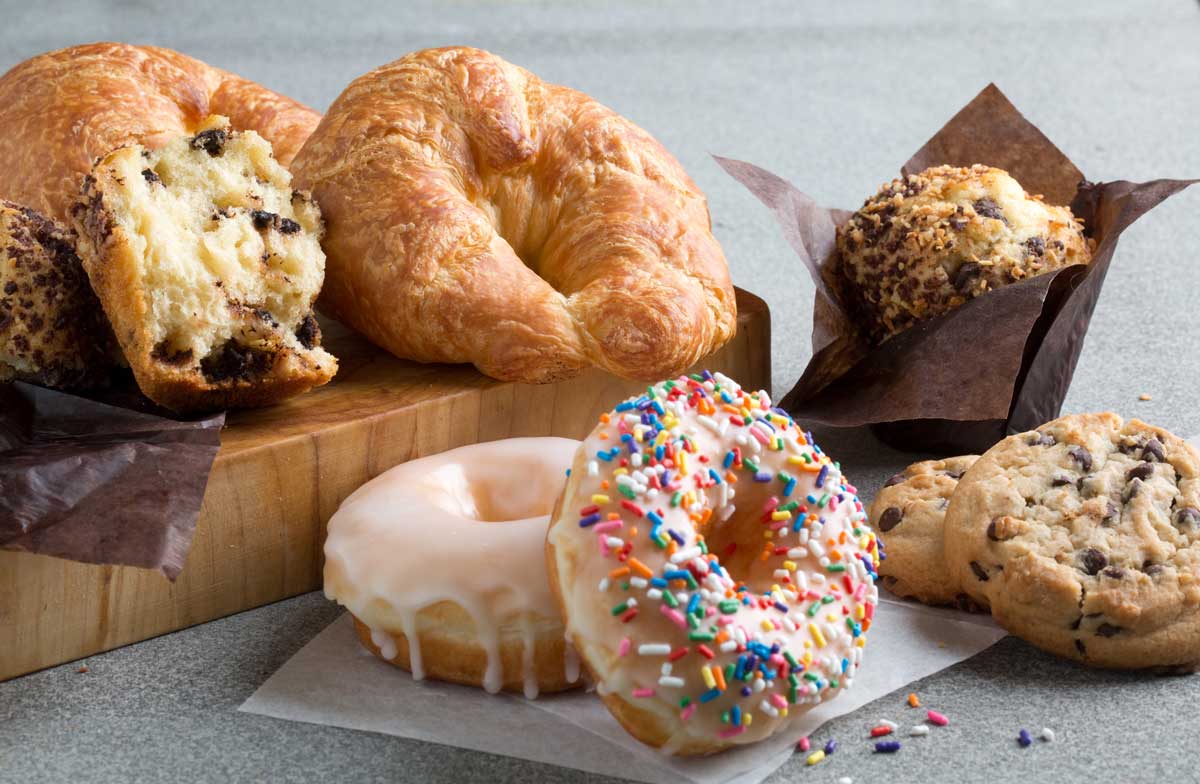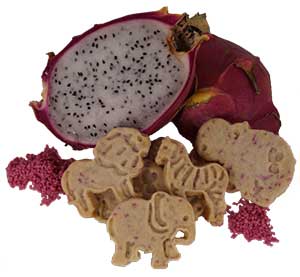Rouse curiosity. Create flavor anticipation. Explore distinctive textures. These are the some of the many reasons bakers add inclusions and toppings. This may be as simple as adorning sugar cookies with sprinkles or whole grain muffins with oat flakes.
Sometimes the product description dictates the bits and pieces because just adding flavor does not deliver on the expected eating experience. A rocky road granola bar, for example, should have soft mini marshmallows, nuts and some form of chocolate.
Sometimes these bits and pieces provide additional nutrition. Think whey protein. More often than not, inclusions add excitement and differentiate simple products from bagels to muffins to pull-apart rolls.
“The great part is you don’t have to completely reformulate,” said Tracy Snider, marketing manager, Balchem Ingredient Solutions. “You can take existing items and punch up the color and flavor with a short turnaround time.”

It’s a great approach to becoming an active player in the limited-edition space that includes seasonal, holiday and even sport-themed products. But, Anand Rao, vice-president of research and development, Agropur Ingredients, said for inclusions and toppings to provide that extra oomph, they must maintain their identity in the finished baked food, and that’s dependent on several factors.
“Formulators need to consider interactions with the rest of the food matrix,” he said.
Maintaining identity
While most toppings and inclusions are designed, often customized, to be drop-in ingredients, this only works when a range of parameters is accounted for.
“When working with a customer on an inclusion or topping, we will ask questions about how the product will be used and the customer’s desired effect in the application,” said Anke Golde, senior director of research and development, sweets and cereals, Kerry. “When we’re thinking about the formulation of an inclusion into a baked good, we consider desired appearance such as piece identity, melty, smeared/swirled; desired texture such as firm, soft, chewy or no texture; processing parameters like bake time, temperature and mixing conditions; storage conditions; and how the product will be served or consumed.”
With topical applications, the considerations are similar. However, appearance is important because the topping is what the shopper sees first.
“Consider how the inclusion or topping is expected to perform,” said Jamie Wilson, director of business development, marketing, culinary, research and development, Parker Products. “Are you adding bursts of butterscotch into a chewy cookie or a scattering of honey cinnamon sprinkle on top of a warm muffin? You’ll need a stable inclusion that can withstand the high-heat baking process for the former, whereas you have more leeway with a topping that’s added after a treat is out of the oven. Regardless of stage in the baking process, moisture must be a top consideration with the application and the inclusion.”
Whether inside or outside the baked food, it’s paramount that supplier and baker are in sync when it comes to the perception of the finished product.
Moisture can impact not only appearance but the inclusion’s texture as well.
“If you want a crunchy inclusion that does not get soggy, then you have to be conscious of the moisture level of the inclusion versus that of the substrate that it is being put into or on,” said Dennis Reid, vice-president of business development, Inclusion Technologies. “If the substrate is higher moisture, then that moisture will migrate into the dryer inclusion, and it will hydrate and soften. In many cases this is a desired effect, but in others if the crunchiness is desired in the final product, then some type of coating or moisture barrier would have to be considered for the inclusion in order to slow down or eliminate the moisture migration.”
Moisture barriers also may help preserve the integrity of the ingredient by preventing staling and oxidation. This becomes more important with inclusions and toppings such as nuts, seeds and some whole grains that are high in unsaturated fats.
While some ingredients are used as both inclusions and toppings, most are modified for the specific application and its packaging and distribution. Shelf life is also an important consideration.
“If the topping will be used post-baking, it should be protected from moisture migration coming from the environment and from the product,” said Claudia Granda, vice-president of R.&D. at Pecan Deluxe. “For example, if a crunchy candy piece is used to top a cake, it would be recommended to use a fat-coated or confectionery-coated piece to avoid the product becoming chewy over time.”
What will it take?
Taste, of course, is important with all bits and pieces. When included in a product, they are consumed with many other flavors and textures, all coming together as one. The story is different with toppings, which a consumer may pick off and taste alone.
Whether inside or outside the baked food, it’s paramount that supplier and baker are in sync when it comes to the perception of the finished product. It is important to determine if the piece will be the flavor focal point or work with other ingredients.
For example, an apple cake may use a pecan crumb topping and a cinnamon glaze, marrying all the apple, pecan and cinnamon flavors. Or the pecan topping could be providing the main flavor as a topping on a simple yellow cake.
“What we have found in some cases is a customer desires to have a particular piece to help accent their baked product,” said Kami Smith, chef and director of culinary showcasing, Pecan Deluxe Candy Co. “They want the inclusion or topping to elevate the overall final product. We need to know how the desired piece will be used and can work backwards to meet necessary formulation specifications.”
Formulators need to consider not only how the inclusions will impact their finished product’s flavor and texture but also the ingredient list and nutrition composition. Eric Shinsato, senior project leader, Ingredion, suggested bakers identify three sets of product attributes.
“The ‘must have’ attributes may include specific nutritional claims such as calorie, protein and sugar content,” he said. “Then there’s the ‘would like to have’ criteria such as plant-based, organic and non-G.M.O., and then the ‘cannot have.’”
The latter may be directed at labeling requirements such as allergen-free and no artificial ingredients. Inclusions and toppings are often very complex ingredients, so these criteria must be established up front.
This article is an excerpt from the June 2019 issue of Baking & Snack. To read the entire feature on inclusions, click here.




